
Techniques For Preventing Low Back Pain In Golf
5 Comments*Editor’s note: Today’s post was written by Melissa Boger, ATC, CSCS, NASM-PES/CES.
When I am working with golfers, the number one complaint that I hear is low back pain (LBP) while golfing. Many golfers think that LBP is something that they just have to live with or play through. The good news is that LBP during golf can be prevented or significantly reduced by taking some simple steps to help your body move in a healthier more efficient way. LBP can be caused by a number of different reasons ranging from muscle weakness to muscle inflexibility to poor golf posture, but no matter what the reason is, most LBP during golf can be treated by improving on 3 major components: Mobility, Stability and Strength.
Mobility, or the ability of our bodies to move efficiently through a range of motion, is extremely important in all facets of life. Specifically in golf, having good rotational mobility is the key to an efficient golf swing and helping to prevent LBP while golfing. Having good mobility throughout your entire body is important, but when it comes to preventing LBP while golfing there are three areas to focus on.
- Hip Muscles (muscles surrounding your hips)
- Hamstrings (muscles behind your thighs)
- Thoracic Spine (muscles between your shoulder blades and low back)
Here are some exercises geared to help increase mobility in the above areas:
Kneeling Hip Flexor Stretch
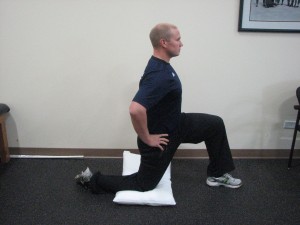
Hamstring Stretch
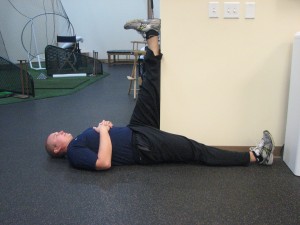
Stability, or the ability of our bodies to stabilize one segment so the other segments above or below can move properly, is also extremely important for a healthy lifestyle. Specifically in golf, having good core stability is essential to a powerful swing and preventing LBP while golfing. When referring to core stability, we are talking about the area that encompasses the deeper abdominal muscles, pelvic muscles, and low back muscles. Different from strength, stability requires a person to recruit and engage the core muscles to keep the spine and pelvis stable during the golf swing. Stability is also important in allowing you to maintain a neutral pelvis while taking your golf stance. Not having a neutral pelvis is another common reason for LBP while golfing.
Here are some exercises that will help improve core stability:
Side Planks
Lying on your side, place your elbow under your shoulder and your forearm flat on the mat. Lift your body off the ground keeping your core braced and stable and support yourself with just your forearms and the side of your foot. Make sure your hip is not sagging and your core is braced throughout the exercise.
Strength is the final key component to preventing LBP while golfing. The body can be both mobile and stable, but if it lacks the strength required to make it through 18 holes of golf, stability will break down leading to LBP or other overuse injuries.
Here are some exercises that will help improve strength to prevent LBP:
Please Note:
Not all exercises are suited for everyone, and there is a risk of injury with any activity. Please be mindful of your safety and well-being when performing these exercises. To learn more about an injury you are experiencing, AthletiCo offers complimentary injury screenings at all locations, or visit our Golf Performance Center for our golf-specific services.
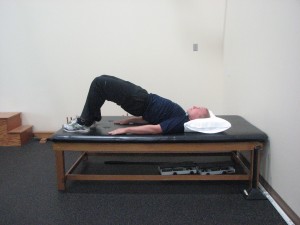
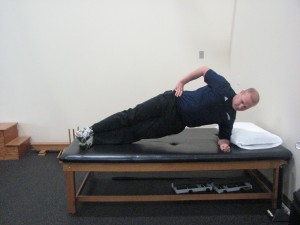
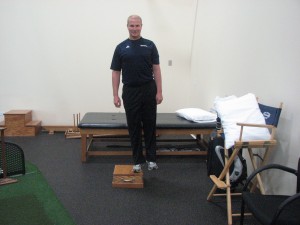
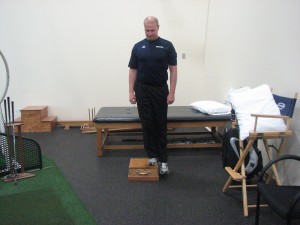
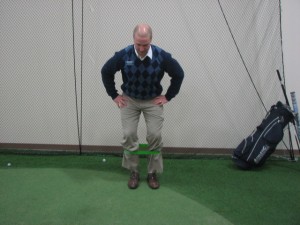
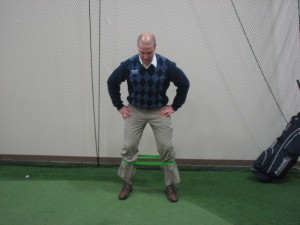


5 Comments
Edward Crowley
Reciently I have had LBP but the exrcises you suggested improved my condition and I am swinging with less effort and apprehension. Thank you so much for those wonderful exercises. I do them every morning and evening.
Vince Kunkler
Thank you very much for this instruction regarding the back and golf. Very generous of you, being in the business of treating these kinds of issues.
Grant Koster
Golf is a dynamic sport with complex biomechanical demands on the body. Even as a Physical Therapist, I am guilty of showing up to the # 1 tee box and “Gripping and Ripping it”. However, when I play my best and feel the best on the course, I get to the range early and have the “dirty dozen” stretches that MY body needs in order to prepare for the demands of a round. The key word is “my” in the sentence above. Everyone is built differently and has different muscles that are tight, weak, strong, etc. and it is important to get assessed by a physical therapist or golf professional that will be able to evaluate your length-tension relationships and strength as it relates to the demands of golf. After that, you will be on your way to having a ‘dirty dozen’ stretches/strengthing exercises that will help you game and prepare you for your round of golf. Golf Pro’s used to work on only skill instruction. Now, if I think it is the minority if you find a golf skill coach that is not working in mobility and stability drills with their students in order to assist the skill education. It is a balanced approach where skill training meets physical demand to perform a skill. Go see a physical therapist for a golf biomechanical screening. Make sure they know about golf and can give you golf specific execises for your body. Hit ’em straight!
-Grant Koster, PT, ATC, CSCS
Shania@Lower Back Pain
Thanks to the admin for sharing your above exercise tips with us. I am facing a great problem for my lower back side pain. It’s really hampered my regular activity. That’s why all of your above tips are help me to get rid off from this misery.
Kevin
Hi BrianYou got it, that is the crux of my instruction! A copule of things about your comment.The photo with the straight shaft in line past impact, is exactly what the average golfer needs to learn to allow the body rotation to control the arms and club. The body rotation controls the arms/club on the downswing, starting from the top, into impact, and past impact. This is not what you have been taught!! The traditional golf swing, does not use the body rotation to trap the ball. When you try to release the club head actively, [b]THE BODY WILL STOP TURNING EVERY TIME[/b], to brace, while the hands throw the club head. This is not powerful or consistent. BUT…if you keep your hands from hitting at the ball and allow the body rotation to continue through impact, the ball is trapped by the entire body mass as you keep turning. AND, since you did not roll the club face open on the backswing (another traditional issue), you do not have to square the face… JUST TURN. This is the concept in a “nut shell”. You do have to allow the body rotation to “Pull” the arms and club back down in front of your body, as you turn… but if you are not helping with the hands, the body just drags the arms and club to the left as you continue to the finish. This will NOT make the ball go left, unless you flip or release, closing the club face. The ball just goes straight. If the ball goes left, you flipped or your body stopped and the arms/club past the rotation… sorry for long explanation… it is a simple, natural move, like throwing a ball, but hard to explain… Ross